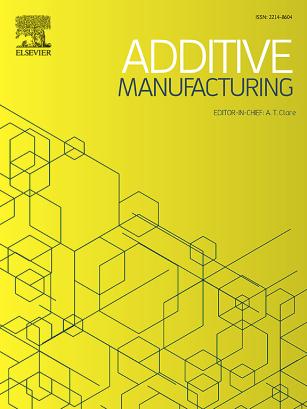
Volumetric additive manufacturing (VAM) can fabricate complex geometries within tens of seconds, yet its resin palette is constrained by materials incompatibilities. In particular, embedding hydrophilic bioactive peptides into hydrophobic polyester resins remains elusive due to severe polarity mismatch and the need for specific cosolvents that complicate resin development for additive manufacturing. Here, we resolve this mismatch and demonstrate single-step VAM of cell-adhesive poly(ε-caprolactone) (PCL) networks. A dimethylformamide–formulated resin co-dissolves a cysteine-terminated RGD peptide and alkene-functionalized PCL; during printing, thiol–ene crosslinking with a tetrathiol covalently integrates the peptide throughout the part. Formulation parameters were tuned to balance peptide solubility, radical inhibition, viscosity, and optical attenuation while preserving rapid VAM printability, enabling porous architectures to be produced in tens of seconds at peptide loadings up to 0.3 wt%. Peptide incorporation and surface availability on VAM objects were confirmed by ninhydrin staining, static contact-angle measurements, and X-ray photoelectron spectroscopy. With adipose derived stem cells and SaOS-2 cells, RGD-dependent adhesion, spreading, and polarization were observed, whereas scrambled RDG controls showed minimal adhesion, indicating sequence specificity. Results were independently reproduced across three laboratories. By converting a previously incompatible peptide–polyester system into a printable resin for VAM, this study expands the materials space for VAM and provides a general route to directly manufacture bioactive polyesters.
Link to Publisher’s page: https://doi.org/10.1016/j.addma.2025.105009
